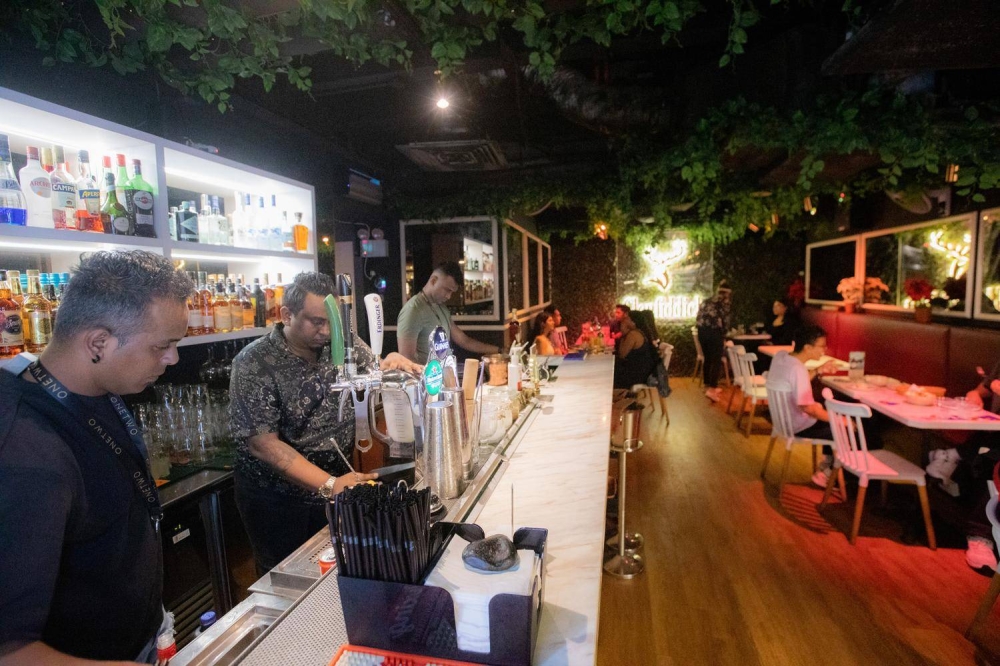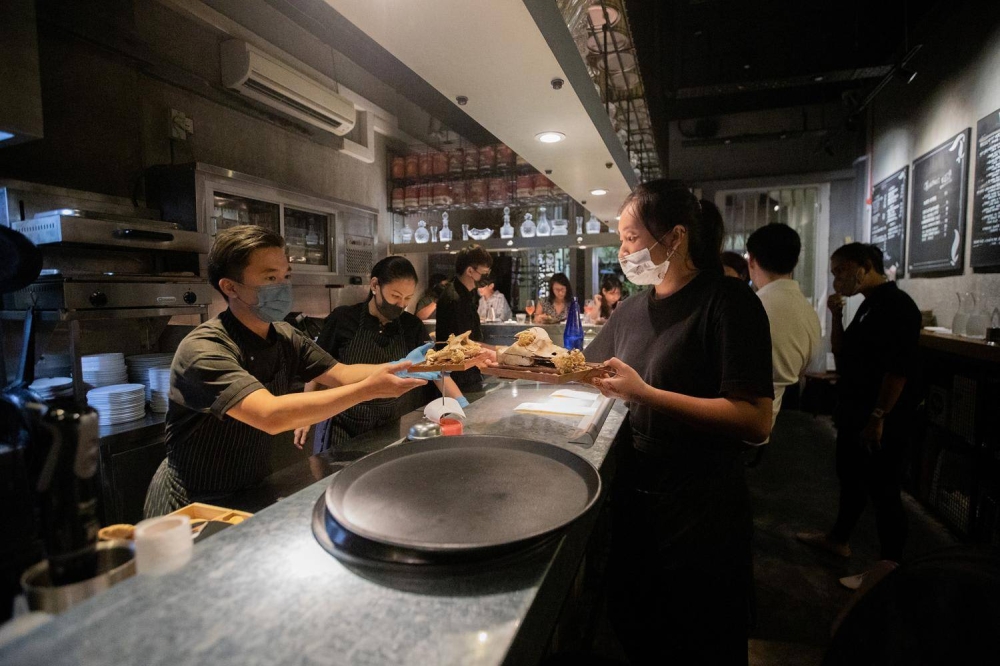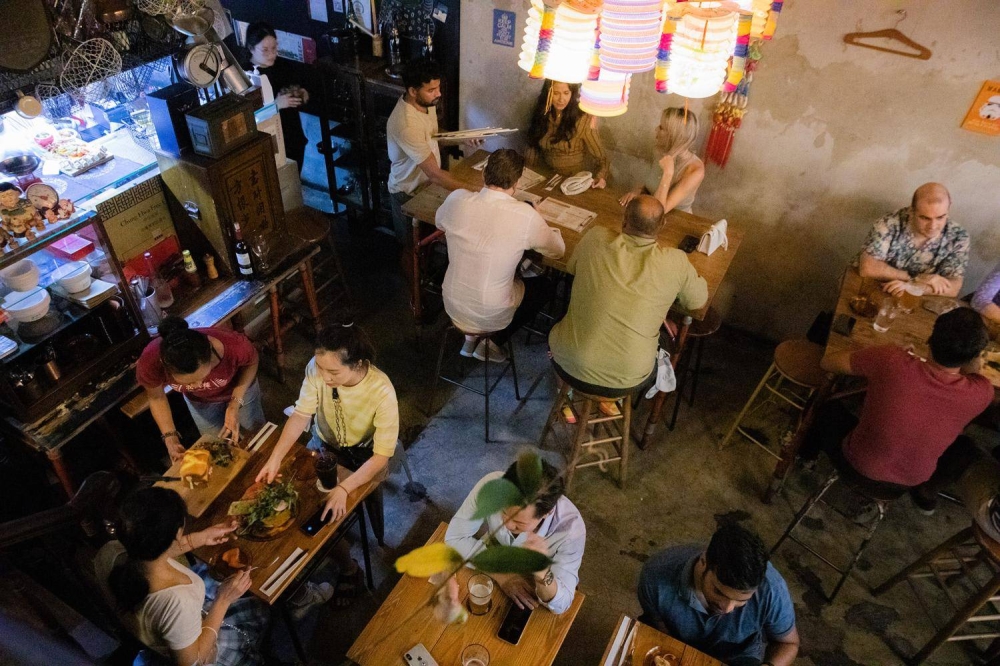SINGAPORE, Sept 10 — The masks are off and the crowds are back, but for some food-and-beverage (F&B) players in the Central Business District (CBD), the return to normalcy has brought a new air of unpredictability.
Before the Covid-19 pandemic, crowds of office workers in the city generally packed the bars, pubs and restaurants near their workplaces on Friday evenings.
But at Corner Bar L’Operetta along Boon Tat Street where these workers make up nine in 10 of its patrons, Fridays have unusually become much quieter, while Wednesdays and Thursdays have become livelier.
Its manager Lukasz Kononowicz, 40, said: “Wednesdays and Thursdays are the new Friday.”
Part of the reason could be due to the flexible work arrangements practised by some companies, he said. For firms that allow employees to choose a few days a week to work from home, workers would tend to pick Fridays to not turn up in the office.
For the past two months, the same trend has been playing out at My Awesome Cafe along Telok Ayer Street, a bistro that transforms into a bar after hours.
Manager Sue Abbas, 47, said that before Covid, the place used to be full past 4.30pm on Fridays, but Wednesdays and Thursdays have lately become its busy days.
“We asked a few of our customers who used to come on Fridays why they were here on a Thursday, and they said it’s because they don’t go to the office on Fridays,” she said.
At another bar along Pekin Street, a manager said that business has been unstable in recent months.
The manager, who requested that he and his bar not be named, said that many of his regular customers on Fridays come from the same tech company nearby.
But once every month, he will not see them because the company allows employees to work from home every last Friday of the month.
For restaurants that cater to diners rather than drinking crowds, they said that business has returned to a pre-Covid normal, especially after masks are no longer needed to be worn indoors.

Muted impact
A similar trend appears to be taking place in the United Kingdom, where the world’s largest trial of a four-day work week has been going on for more than two months, with pubs beginning to deploy more workers on Thursdays than on Fridays.
In Singapore, however, the impact of flexible work arrangements on F&B businesses has been more muted because there are no longer restrictions on the number of employees who can return to office and only a small number of companies are trialling four-day weeks.
Of the more than 20 restaurants, bars and pubs in the CBD whose workers spoke to TODAY over the past week, a large number said that Fridays were still the busiest nights for them.
Yet, even for them, several said that business on the other weekdays has been picking up slightly compared to before the pandemic.
Mr Nasen Thiagarajan, chief executive officer of Harry’s International, said that the firm’s outlets in the city area have had about a 30 per cent revenue drop on Fridays compared to before the pandemic.
On Tuesdays to Thursdays, revenue has picked up slightly by about 10 per cent.
Despite this, Fridays are still its busiest night by far and the greater crowds on Tuesdays to Thursdays have not been enough to cover the loss in revenue on Fridays, Mr Nasen said.
Harry’s, a bar and restaurant chain, has 19 outlets across the island, 12 of which are near the CBD.

Businesses adapt
Friday crowds aside, F&B establishments are also seeing other changes.
At restaurant and bar OneTwo@Pickering, where customers used to turn up for drinks after work, people are now turning up later in the night.
Its general manager Arvind Pillai, 29, said: “Now, it’s sort of in a flux.
“We’ve reduced our labour cost and tried to hype up the music earlier to retain the crowd. And we’re also doing a bit more early bird specials from 5pm to 7pm.”
At Lolla restaurant on Ann Siang Hill, head chef Johanne Siy has been keeping a lot more part-timers on call because of how unpredictable business has been lately.
While business volume has generally stayed the same, she said: “Lately on Mondays, we've been slammed, when Mondays used to be quiet. Thursdays though, are not as busy as they used to be."
On several days, she has had to call up part-timers on the day itself to help out during dinner service.
“It’s also partly in response to the fact that a lot of people don’t want to work in this industry full-time,” she said. “We’ve had part-timers on call before in the past but not as many. Now it’s also more spontaneous.”
Ms Siy said that business has been slow for the industry in July and August, which she attributes to people travelling out of the country with borders opening up around the world, and new restaurants sprouting up after holding back from opening during Covid-19.
This month, though, business has been picking up with more reservations made by companies that have flown in their employees from their overseas branches for company gatherings.

Nightlife business veteran Dennis Foo likewise described the current state of the industry as being in a “state of flux”, with nightclubs serving the party crowds doing well but other nightlife venues serving primarily the office crowds being affected by unpredictable crowds.
“It’s not settled down, for sure. There’re also other issues like the lack of manpower that has been aggravated since the reopening.”
Mr Foo, 69, has built and led some of Singapore’s most popular nightspots such as St James Power Station and Shanghai Dolly before he stepped down.
He is now adviser to the Singapore Nightlife Business Association.
Mr Foo added that the market rate for part-time workers in the nightlife sector has gone up from roughly S$10 to S$12 an hour to S$15 to S$16 hourly.
The rising cost of living also affects nightlife venues more compared to eateries because people tend to cut down on drinks and entertainment when they tighten their wallets.
“But new or revitalised venues will have an edge because the audiences generally are looking for new and interesting venues to drink and party,” he said.
“So there’re still opportunities in a post-pandemic world.” — TODAY






















